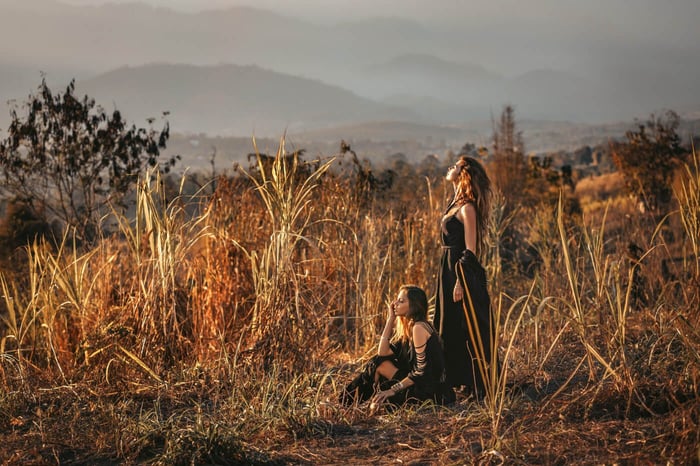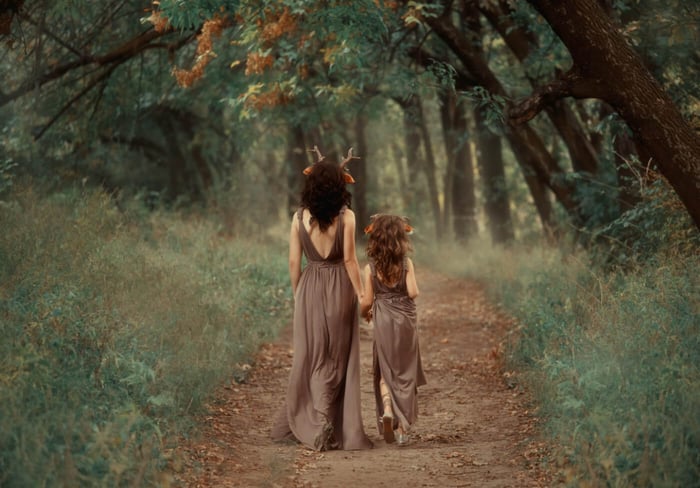Lughnasadh is one of eight seasonal festivals in the Celtic Wheel of the Year. And is also known as Lammas or First Harvest. This Sabbat day was traditionally celebrated when the first grain was cut but has been modernized and popularized as a pagan celebration on August 1st and the days surrounding it.
The Wheel of the Year is a system of seasonal celebrations followed and honored by Pagans, Witches (of all practices!), the Earth Spirited, those wishing to connect with the natural world, and spiritual seekers everywhere.
Not only does this holiday connect with the energy of a traditional harvest festival (abundance, giving thanks, and gratitude), but this celebration also honors hard work and dedication, as well as the family and the community through the story and mythology of the God Lugh.
The story of the first harvest has its roots in mythology from the tale of Lugh, a Celtic God, and his foster mother Tailtiu. Lugh is the God of both poets and blacksmiths and is known for upholding truth and order. Tailtiu is an early Irish deity who is dedicated to the care of the land and supporting agricultural endeavors, some myths point to her as the land itself.
So the story goes, that through her dedication and tireless work, Tailtiu died from exhaustion and Lugh buried her under sacred ground in the Earth. Her son then honored her passing with a feast, which became the festival we know today as Lughnasadh.
Lughnasadh traditions include offerings, ritual dance-play, climbing hills and mountains, horseracing, a feast, archery, boxing, fencing, and other physical competitions, which became known as the Tailteann Games, these games have been celebrated ritually during this time of year for many centuries.
These traditions differ and vary depending on where they’re celebrated and the context for these celebrations. There is a myriad of ways to celebrate Lughnasadh depending on your own practice and where you live in the world.
How to Celebrate Lughnasadh
An important part of this festival is the ritual cutting of the first grain, followed by an offering and then a feast created with your earthly riches.
While you may not live in an agricultural community, there are other ways to connect with the energy of the first harvest. Now is a good time to reflect upon the dreams you may have imagined and the intentions you set at Imbolc, the planting of these seeds at Ostara, and the tender and ritual care you’ve given your intentions and plans as the wheel turned through Beltane, Litha, and now to Lughnasadh and the first harvest.
You can ask yourself what needs to be done for the harvests at Mabon and Samhain to continue.
Seasonal magick is always a potent practice during these eight festivals, and it’s important to remember how all these themes and stories are interconnected, and also made personal in your own life and communities.
Whether you live in the heart of a dense city or in the expanse of a rural landscape, the natural world is longing to speak with you and asks you to listen closely.
Lughnasadh is also a powerful time to honor your family and lineage (chosen family included). How can you uplift your community, be sure that everyone is seen and celebrated, and that everyone has enough? This is sacred and essential work. The first harvest is a reminder of the abundance that we all share, and a celebration against scarcity.
Themes and Symbols of Lughnasadh
Corn or Grain: A beautiful addition to a seasonal altar, this symbol of the season is a way to tap and tune into the cyclical nature of the seasons and the first harvest.
Harvest: The harvest is a time of abundance, gratitude, and giving thanks. Connect with the spirit of the Sabbat and tell those who work alongside you and the natural world, thank you.
Feasting and Gathering: An integral part of the harvest is gathering with loved ones to share in the bounty. Feast and gather with chosen family, relatives, and friends to celebrate this Sabbat.
Offerings &
Games: The
Community Support: Community is at the heart of Lughnasadh. Now is a wonderful time to check in with those in your community and be sure everyone has what they need as you move into the autumn.
Blessed be!
$ 17.00
The Wheel Of The Year, is frequently broken into eight festivals. The Four Seasons are known as Solar Festivals, as they mark a seasonal change caused by the Sun. The cross quarter days are marked by Fire Festivals and are… read moreWheel Of The Year Altar Cloth










